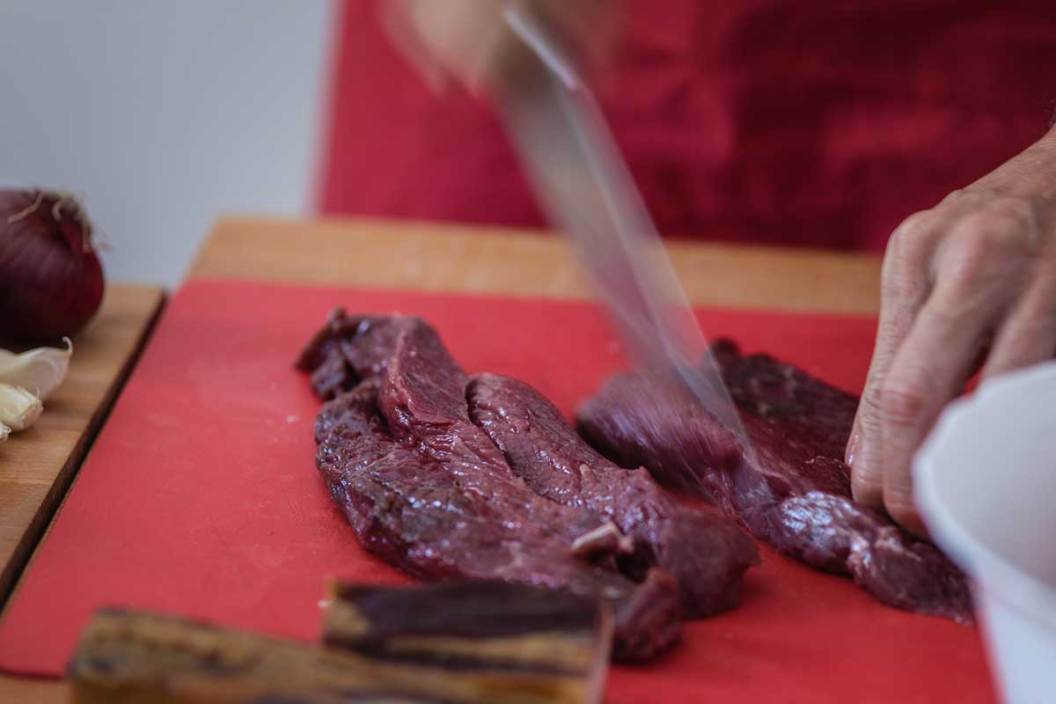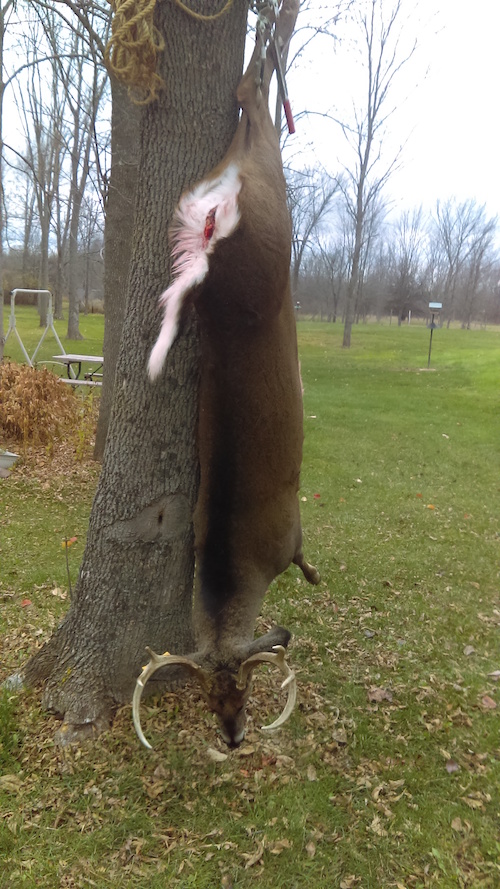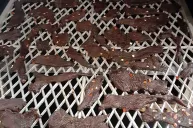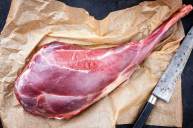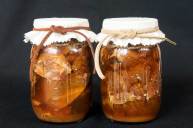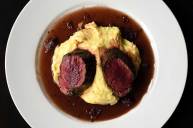If you've ever wondered about dry aged venison game meat, here are the advantages.
In a nutshell, dry aged venison is the process of hanging your hard-earned deer meat long enough to let the natural bacteria in the air begin to break down the muscle tissue in the effort to increase its tenderness and make the meat more enjoyable.
In fact, there are naturally-occurring enzymes in the flesh that already exist, which work to break down the connective tissues allowing for the muscle to dehydrate and concentrate the flavor.
It may not sound exactly mouthwatering, but let's be honest with ourselves: we love the backstraps and the tenderloins because they are the most tender cuts. If we can help other cuts of meat approach that tenderness, all the better.
Dry aged beef has become the standard, and it's placed in very specific temperatures and conditions needed to make the eating experience a great one. For those of us who love to eat deer meat, there is good reason to mimic that dry aging process, at least as closely as we can, with our venison.
Proper Dry Aging
The dry aging process means using a controlled temperature and environment to give the enzymes time to break down connective tissue before bacteria causes the meat to rot. The ideal temperature range is between 33 and 37 degrees Farenheit.
To properly dry age your meat, it is most important to create an environment where the temperature is kept constant. If it is too cold (below freezing, or below 32 degrees), the natural enzymes stop working. Too warm (above 40 degrees or so), and the bacteria can multiply rapidly, causing spoilage.
One of the best reasons to dry age is key to the word "dry." The lower the humidity around the meat, the slower any bacteria will reproduce and the safer the process becomes. For those fortunate enough to have access to a walk-in cooler, humidity levels tend to be on the low side making them excellent for aging meat.
One other key component to aging your deer is duration. It's true that some beef is aged as much as three weeks or longer, but this is almost always done in a professional setting where all three processes can be monitored closely. For deer, most of us are working with a tree in the yard or the rafters in the garage to hang them from. That's means it's more important to time things correctly based on the current temperatures.
With the right conditions, I've hung my deer for two to three days minimum, and have rarely let it age longer than a week. Some friends I know prefer at least one week, especially if they finally beat that older buck they've been after. Their argument is based on the idea that older animals have more muscle mass and connective tissue to break down. If the meat is dry aged, it often loses a lot of the gamey taste some folks are averse to.
How to Dry Age Venison
Simply put, the simplest way to dry age meat involves hanging your skinned deer outside, in a tree or skinning pole, and at the proper temperature range. It's tough to encounter consistent temperatures within the dry age range (33-37 F), so hanging a deer outside can work, but likely not for long.
A harvested whole deer doesn't need to be skinned to be aged, and the skin can serve as a layer of protection from the elements. If your deer does need to be skinned, hanging and drying it in game bags or cheesecloth is a smart move, as it's then protected from insects.
You can also use a refrigerator, which allows for excellent temperature control and air circulation. It's best to remove the racks and actually hang wild game to dry age it in a fridge, because any meat surface that is not fully exposed to the air can attract bacteria growth.
Finally, a walk-in cooler is likely the best (but also most expensive) method of dry aging deer. Walk-ins are made to store large pieces and quantities, and have excellent temperature control and air flow. This is what meat processors and butchers use, and it really is the best option for a deer hunter. You can buy one or find instructions online to build your own, DIY style, for a seriously controlled environment.
With any method, you can use a meat thermometer to periodically check in on the temperature. If the meat approaches 40 degrees, it's time to get it in a freezer or butcher it completely.
What to Do With Dry Aged Venison
When you've completed the dry aging process, the venison will have a hard layer of "crust" or rind on the outside of the meat which will need to be trimmed off before enjoying. It's usually about 1/4 of an inch thick. Luckily this hard cap helps protect each piece of meat.
A small amount of white-colored mold is acceptable, but any green, gray, or especially black mold is a red flag, and you will likely have to cut around the molded area and dispose of it.
The outcome is a cut of venison that doesn't require time to marinate in order to develop a moist meat. Dry aged venison will sear better too, locking in even more moisture and flavor.
Bone-in cuts like hindquarters and front shoulders are bigger and better for dry aging. The choice cuts like backstraps and tenderloins run the risk of drying out too much, and often aren't dry aged at all. The larger the muscle groups that are being dry aged, the better.
Now that you've learned more about it, do you intend to dry age your venison?
Looking for a new way to display those antler sheds? Go to Rack Hub and use the coupon code Craiger. Be sure to follow my webpage, or on Facebook and YouTube.
Products featured on Wide Open Spaces are independently selected by our writers and editors. However, when you buy something through our links, we may earn a commission.
NEXT: VENISON BACKSTRAP: AN ODE TO OUR FAVORITE CUT
